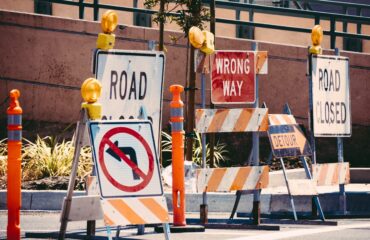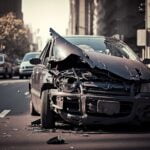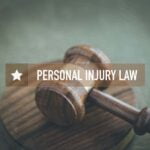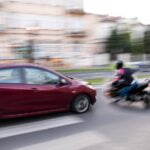Kansas Motorcycle accidents: 10 tips that prevent motorcycle crashes!
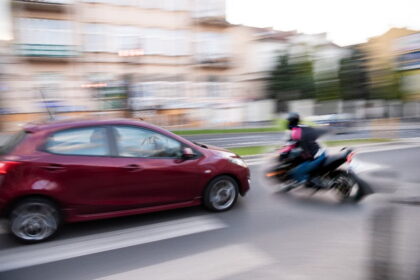
Although motorcycle crashes represent a mere 1.3% of all accidents in Kansas, they account for nearly 10% of all on-road fatalities. The smaller, lighter and less stable vehicles are understandably more vulnerable than passenger cars. The protection offered by the metal shell of the vehicle body is also lacking in the case of a motorcycle.
Both rider and passenger run a very high risk of being ejected from their seats in case of a collision Also, it’s very easy for motorcyclists to end up in the blind spot of not just the big trucks but also regular passenger vehicles. Put all of these together and it’s easy to understand why motorcyclists face greater danger when on the road than other motorists.
Fortunately, a few simple measures that often get ignored can bring down your risk of suffering serious injuries in a motorcycle crash.
For it all starts with YOU!
1. The better you ride, the safer you can be: If you are new to riding, take an advanced course to hone your bike maneuvering skills. Proper braking technique, safe turning and advanced bike control will all help you to prevent on-road mishaps.
2. Because safety trumps all else: No matter how advanced your riding skill or the number of years you have spent exploring the outdoors on your bike, you could still do with a refresher course on bike safety. In fact, it is not unusual for even the more advanced riders to become complacent about some of the common risk factors.
A safety course is meant not only to jog your memory on collision avoidance techniques but also to teach you how to crash safely when a collision is inevitable, thus minimizing physical and property damage.
3. Even those mean machines have their limits and flaws: If airplanes and big rigs need pre-operation checks, there is no reason to take your motorbike out without ensuring that everything works as it should. Although mechanical failure only accounts for 3% of all motorcycle crashes, when these do occur, they are deadly. So, in addition to regular maintenance, before every ride, make it a point to check:
- The tires for air pressure and signs of damage.
- The controls for kinks in the cable and/or abnormal reaction.
- The lights, including the turn signals, the brake lights and the headlights.
- The side stand and center-stand for glitch-free folding and proper stay up.
- The brakes for smooth, quick and precise operation.
- The axle nuts for tightness.
- The engine for any signs of fluid leak.
- The chain set for the right amount of slack and the chain for lubrication.
- The horn.
4. Sobriety equals safety: A rider having consumed two beers is 40 times more likely to crash than a rider who is enjoying his saddle time alcohol-free. Also, drunk riders are most likely to crash by losing control of the vehicle, which causes them to run off the road. And in terms of fatality rate, these crashes come second only to head-on collisions. Those facts alone should give you the impetus to never drive when drunk.
5. Speeding is the fastest way to the ER: Nearly a third of all motorcycle crashes are attributed to speeding. The worst part is that when speed is implicated in a motorcycle crash, no matter whether the wreck involves another vehicle or not, the motorcyclist has a very high risk of suffering from serious and even fatal injuries.
In fact, speeding leads to an increase of a whopping 212% in the risk of fatality in a single vehicle motorcycle crash. Regardless of traffic conditions and road type, a motorcyclists can sustain grievous injuries in a high sped crash, not to mention that motorcycle almost always get totaled in such incidents.
6. Proper gear makes for safe riding: No matter how skilled a rider you are or how safety conscious, if you want to be safe when out on the road, you simply cannot compromise on your riding gear. A rule of thumb that even the veterans swear by is this; the better and more covered you are, the lower the chances of ending up bloodied and bruised.
Having said that, pick your riding gear strictly based on your riding needs. For instance, you will of course need abrasive resistant pants, riding boots and jacket, helmet, gloves, and safety eye glasses. But, buy stuff that is best suited for the terrain type you intend to cover, the motorcycle type you are riding, the distance you intend to cover, the weather you are riding in and the time of the day when you intend to ride.
Making up for the lapses of other motorists!
7. Being invisible is not an option: It’s not that drivers deliberately ignore motorcyclists or want to drive them off the road. The truth is that most of them suffer from a visual bias, which makes them miss vehicles that are significantly smaller than their own.
This phenomenon is so common that over 90% car drivers who are involved in a multi-vehicle motorcycle crash state that they never saw the motorcyclists or that the motorcycle appeared out of nowhere, which did not give them enough time to react.
So, do all you can to make yourself seen! And that includes giving up black and brown gear in favor of something brighter. Also, remember to use reflective tape on your riding gear as well as on your motorcycle. In fact, don’t just the use of the reflective tape on the front and rear of the vehicle but also use it on both sides.
8. Keep those lights on: Most new model motorbikes have headlamps that are hard-wired to go on as soon as you start the engine, but if you are cruising on old machinery, you will have to get them up and shining manually. And, don’t wait till sun down to do so. Studies have shown that keeping those headlamps on improve visibility of motorcycles even in daylight hours
9. There is no need to stay out of the mix: Of course, motorcyclists should maintain their distance from all vehicles around. But, that’s no reason to single yourself out and away from the traffic around you. Especially when riding at night, remember that while other motorists may miss a motorcycle, they will notice one or more cars that are passing in front of them or are about to join the traffic.
When going through intersections, don’t ride several yards ahead of or behind the flow of traffic. Both are dangerous positions to be in because motorists tend to focus on the stream of traffic behind or ahead of the motorcyclists. And that simply increases the risk of the smaller vehicle being missed. A safer position is next to the front fender of a car, so you are not in the blind spot, and you will be a part of the clot of vehicles, hence will be seen.
10. Play on the defensive, not on the offensive: Most experienced motorcyclists offer this advice to rookies: Ride as if you are completely invisible to the other vehicles drivers. If that is the mindset you have when you are on the saddle, you will know that there is no point in expecting the other motorist to take corrective action to save you, because they simply cannot see you.
In other words, the onus for your safety lies squarely on your shoulders. Hence you have to keep your guard up all the time and every time.
Because safe is always better than sorry!
11. Don’t let the motorbike control you: Never operate the motorcycle at more than 60% of your riding ability. This wisdom applies not just to the speed of the motorcycle but also to the maneuvers, travelling distance, time of the day/weather conditions, road/surface conditions and even to the number of hours spent riding at a stretch.
Simply put, make sure that it’s you who is always in control and not the vehicle or any aspect of riding. So, if you think you are going faster than you can stop, well, slow down. If you think riding for 3 or 4 hours or even less would be a drain on your body and brain, cover the journey in shorter segments.
12. For it’s hard to win against nature: Although fewer than 5% of all motorcycle crashes are attributed to inclement weather, when these crashes do occur, they have catastrophic ramifications for the rider. So, if you are ever tempted to take your ride out when it’s pouring, remember it is always better to reach your destination in one piece (both your bike and you).
No matter how good a rider you are, the fact is that motorcycles, by their very design, lack the stability enjoyed by cars. Hence, rain, snow and hail carry a significant risk of hydroplaning for you.
While a car driver may be able to recover from the loss of road grip, things can take a bad turn for a motorcyclist in such a situation. So, take the time out to check the weather forecast for your city, all cities that you intend to pass through and of course your destination as well.
But, what if things go awry even after all that?
Here is an irrefutable fact- Being out on the road is far more dangerous for motorcyclists than the drivers of other vehicles. To make matters worse, misconceptions and faulty perceptions abound when it comes to motorcyclists.
In case of a crash, the first few fingers inevitably get pointed at the motorcyclists. Unfortunately, these biases coupled with the lack of the default PIP (Personal Injury Protection) safety net, means that an injured rider has little to rely on when dealing with the medical bills that arise as a result of the crash.
If you have been injured in a crash that resulted from the callousness, negligence or an error in judgment of another motorist, contact DeVaughn James, and we will make sure that the at-fault motorist and his/her insurance provider do not snatch this right away from you.


